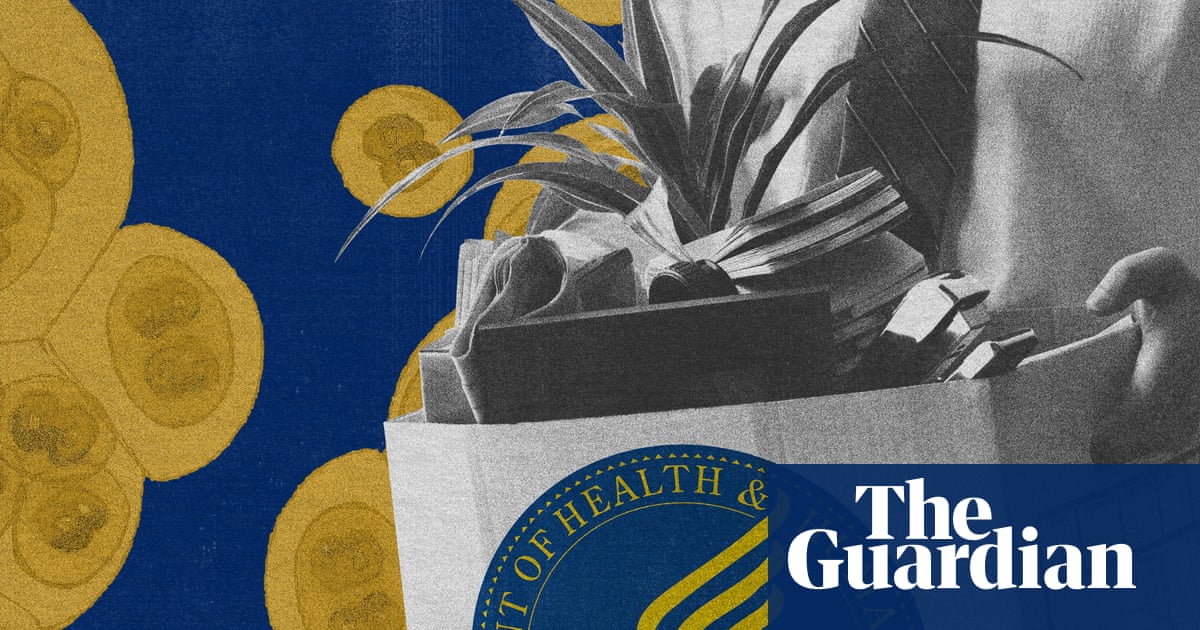The Impact of Mass Terminations and Budget Cuts at HHS
Massive staffing reductions and budget cuts at the Department of Health and Human Services (HHS) have raised serious alarms about the future of vital public health programs in the United States and abroad. As the HHS, now under the leadership of Robert F. Kennedy Jr., faces a reduction of its workforce from 82,000 employees to 62,000, former staff members warn about the dire consequences of these sweeping changes. Programs affecting essential services, such as child support enforcement and international HIV treatment, have already been significantly impacted.
Sweeping Reductions: A Flawed Approach
Interviews with former HHS employees reveal a chaotic and flawed process behind these terminations. As Donald Trump’s administration implemented significant workforce cuts, the state of public health is reported to have suffered significantly. Cuts made by Elon Musk’s "department of government efficiency," known as Doge, have resulted in additional layoffs at state public health agencies across the country. South Carolina’s department of public health, for example, faced a reduction of over 70 staff members due to funding shortfalls.
An epidemiologist from South Carolina poignantly articulated the alarming implications of these cuts. "Disease surveillance is how we know when something unusual is happening with people’s health, like an increase in food poisoning cases or an emerging virus. When we lose public health staff, we lose time, accuracy, and responsiveness," they stated, highlighting the potential for outbreaks to go undetected.
The Ripple Effect on Child Support Services
Within HHS, the Administration for Children and Families (ACF) handles the enforcement of child support payments. Each dollar allocated in federal funding allows ACF to collect $5 in child support. However, the reduction in staff has severely hampered efficiency. A child-support specialist who preferred to remain anonymous reported that the cuts have piled additional responsibilities onto remaining employees, making it virtually impossible to meet federal standards.
“For regions now managing a vast workload with only two staff members, compliance with federal requirements is all but lost,” the specialist lamented. This has potentially grave implications for vulnerable families reliant on support, particularly given that ACF oversees those crucial programs at state, tribal, and local levels.
Aids Relief Program in Jeopardy
One of the most concerning casualties of the HHS cuts is the dismantling of critical programs like the President’s Emergency Plan for AIDS Relief (Pepfar). Originally established in 2003, Pepfar has been instrumental in preventing mother-to-child HIV transmission and has been credited with saving millions of lives.
Employees at the Centers for Disease Control and Prevention (CDC), which operates under HHS, were shocked to find themselves laid off, despite previously securing waivers to protect their work from funding freezes. Twenty-two epidemiologists dedicated to child HIV prevention were terminated. Their concerns resonate deeply: “Our worry is that while services are still labeled under Pepfar, the foundational systems that allowed them to succeed are being dismantled,” one epidemiologist stated, emphasizing the significant investments the U.S. has made in global health initiatives.
The Fallout from Mass Firings
In Washington, the HHS has been particularly impacted by cuts from Doge, with hundreds of crucial grants to state, local, and tribal governments being wiped out—adding up to a staggering $6.8 billion in unpaid obligations. With HHS accounting for about a quarter of federal spending directed toward health programs, the implications are enormous. The proposed budget cuts threaten to decrease discretionary spending by over $33 billion.
Robert F. Kennedy Jr., known for promoting controversial views on various health issues, was nominated by Trump and approved by a divided Senate. Following a large-scale reduction in force on April 1, Kennedy claimed that 20% of the dismissals were erroneous and that those employees would be reinstated; however, no such reinstatements have occurred, resulting in an air of uncertainty and frustration among former and current staff.
Distress Among Public Health workers
Employees at the Centers for Medicare and Medicaid Services have reported irregularities during the termination process, claiming that proper protocols were not followed. The National Treasury Employees Union has even filed a grievance addressing how these firings were conducted. One employee expressed profound dissatisfaction: “This administration has gone out of its way to make it a living hell for all of its public servants.”
Current and former staff members alike have expressed concern about how such drastic changes will diminish the nation’s public health capabilities. The reduction in personnel not only leads to a decreased workforce but fundamentally threatens the essential safety nets that protect the health and wellbeing of millions across the country and beyond.
The Long Story Ahead
As public health agencies and employees grapple with the fallout from these mass terminations and funding cuts, the future of many established health programs hangs in the balance. The potential loss of critical disease surveillance capabilities, child support enforcement, and life-saving initiatives abroad points to a broader crisis in public health management—one that is likely to affect families and communities for years to come. The stakes could not be higher as future outbreaks may go unnoticed, impacting public health on a substantial scale and threatening the lives of vulnerable populations both domestically and internationally.


